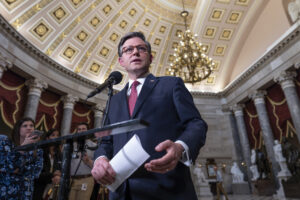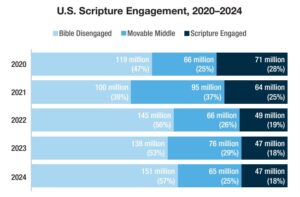
PIERRE, S.D. (BP)–In a direct challenge to the U.S. Supreme Court’s 1973 Roe v. Wade decision, the South Dakota House of Representatives easily passed a bill Feb. 9 that would ban nearly all abortions in the state.
The bill passed by a vote of 47-22 and now goes to the state Senate, where a vote is expected to be tight. Ten of the Senate’s 35 members are sponsors. It is not known whether Gov. Mike Rounds, a pro-life Republican, would sign it.
Supporters of the bill — which has an exception for the mother’s life — hope it leads to the overturning of Roe, the infamous decision that legalized abortion nationwide. Opponents of the bill tried unsuccessfully Feb. 9 to add an amendment making an exception for rape and incest.
If it passes the Senate and is signed into law, a legal challenge almost certainly will follow.
“I honestly believe that this is the time to address this issue,” state Rep. Roger W. Hunt, a Republican and the bill’s chief House sponsor, said during floor debate.
The Senate sponsor is Democratic state Sen. Julie Bartling.
“I think South Dakota has always been what I call a pro-life state, and I think it’s ready to step up and be in the forefront and make some of these first moves,” Bartling told Baptist Press. “I would say the majority of South Dakotans would favor a ban on abortions.”
The bill would make it a felony for anyone to perform an abortion. The mother would not be charged with a crime. The language of the bill –- named the Women’s Health and Human Life Protection Act — says that “life begins at the time of conception” and that scientific advances since 1973 have proven that the unborn child is indeed life. The bill says the goal is to “fully protect the rights, interests, and health of the pregnant mother, the rights, interest, and life of her unborn child, and the mother’s fundamental natural intrinsic right to a relationship with her child.” The bill is based on the findings of a task force that studied abortion.
South Dakota’s legislature passed similar legislation in 2004, only to see Rounds issue a “style-and-form” veto, sending it back to the legislature for minor changes. Rounds said in ’04 that he agreed with the bill’s intent, but was fearful that its wording would lead a court to strike down not only the bill but also the state’s other restrictions on abortion. The House ageed to Rounds’ changes, but the Senate defeated the reworded bill, 18-17, when a senator who previously had supported it switched and voted against it.
But Hunt told BP he believes he has the votes in the Senate to pass the bill and is confident Rounds will sign it. Since that 2004 vote, an election has taken place.
Although other states are considering legislation that would challenge Roe, South Dakota’s strong pro-life legislature and pro-life governor make it unique.
“Whether it’s because of our legislation or some other [state’s] legislation, the goal is to prohibit the killing and the termination of life of all of those unborn children,” Hunt told BP.
The bill, though, doesn’t have the support of all pro-lifers, some of whom say the Supreme Court isn’t ready to overturn Roe. If the bill becomes law and is overturned by the Supreme Court, these pro-lifers say, then the high court’s legal precedent for Roe will have been strengthened.
Of the Supreme Court’s nine members, five are on record as supporting abortion rights. But one of those five, Justice Anthony Kennedy, voted with the minority in 2000 to uphold Nebraska’s ban on partial-birth abortion. It is not known how new Chief Justice John Roberts and new Justice Samuel Alito would vote on a Roe challenge. But Hunt hopes Roberts and Alito will help shape the court. In addition, Hunt notes that Justice John Paul Stevens, who supports Roe, will turn 86 in April and could retire. A challenge to Roe, Hunt said, could take three years to make it to the high court.
“I believe Roberts and Alito will bring some new philosophy to the court, new arguments,” Hunt said. “Coupled with those new arguments are going to be the technological and medical advances that we have seen. We [also] know so much more about post-abortion problems [compared to what was known in 1973].”
Speaking during floor debate, Hunt noted that the unborn child’s DNA is different from the mother’s.
“It is not just some tissue in the mother,” he said.
Pro-lifers have taken advantage of ultrasound technology to make great advances in recent years. Particularly helpful has been the 4-D ultrasound, which allows a mother to see her baby moving in the womb. The tiniest features — such as the sucking of the thumb — can be seen.
Hunt compared the Roe v. Wade decision to the 1896 Plessy v. Ferguson decision that affirmed racial segregation. It was reversed in 1954 by the famous Brown v. Board of Education ruling.
“There would not have been Brown v. Board of Education had someone not decided they wanted to, in essence, have a prior decision of the United States Supreme Court set aside,” Hunt told BP. “And so the point to be made is that somebody has to present the issue to the Supreme Court to give them the opportunity to overrule Roe vs. Wade.”
–30–














